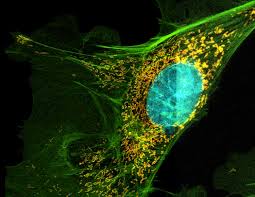Use of in vivo confocal microscopy for the diagnosis of corneal dystrophies
Keywords:
DeCS, Confocal microscopy, cornea, dystrophiesAbstract
The cornea is the tissue of the eye that provides most of the refractive power. Any disease that alters its morphological characteristics affects vision. This is why the early and successful diagnosis of corneal dystrophies guarantees that patients are treated on time to improve their health and quality of life. Confocal microscopy has become the technology per excellence for the detailed study of the cornea in a non-invasive way.
Downloads
References
1 González-Sotero J. Características morfométricas in vivo del queratocono: su evolución y asociación con la gravedad clínica. 2014. Tesis de doctorado.
2 Pawley JB. Handbook of Biological Confocal Microscopy. 3ra edición. Berlin: Springer; 2006.
3 Espacenet.com [Internet]. Patent search. Patente Nº 3013467. Citado 16 ago 2016. Disponible en: http://v3.espacenet.com/textdoc?DB=EPODOC&IDX=US3013467
4 Cavanagh HD, El Agha MS, Petroll WM, Jester JV. Specular microscopy, confocal microscopy, and ultrasound biomicroscopy: diagnostic tools of the past quarter century. Cornea. 2000;19(5):712-722.
5 Szaflik JP. Comparison of in vivo confocal microscopy of human cornea by white light scanning slit and laser scanning systems. Cornea. 2007;26(4):438-445.
6 Pucciarelli M. Microscopia confocal [Internet]. Monografías.com.
Disponible en: http://www.monografias.com/trabajos16/confocal/confocal.shtml
7 Efron N. Contact lens-induced changes in the anterior eye as observed in vivo with the confocal microscope. Prog Retin Eye Re. 2007;26(4):398-436.
8 Patel DV, McGhee CN. Contemporary in vivo confocal microscopy of the living human cornea using white light and laser scanning techniques: a major review. Clin Experiment Ophthalmo. 2007;35(1):71-88.
9 Li HF, Petroll WM, Moller-Pedersen T, Maurer JK, Cavanagh HD, Jester JV. Epithelial and corneal thickness measurements by in vivo confocal microscopy through focusing (CMTF). Curr Eye Res. 1997;16(3):214-221.
10 McLaren JW, Nau CB, Erie JC, Bourne WM. Corneal thickness measurement by confocal microscopy, ultrasound, and scanning slit methods. Am J Ophthalmol. 2008;137(6):1011-1020.
11 Cavanagh HD, Jester JV, Essepian J, Shields W, Lemp MA. Confocal microscopy of the living eye. CLAO J. 1990;16(1):65-73.
12 Lavado Landeo L. Córnea. En: Salaverry García O, editor. Cirugía IV: Oftalmología. Lima: Universidad Nacional Mayor de San Marcos. p. 53-71.
13 Villa C, Santodomingo J. La córnea. Estructura, función y anatomía microscópica. Gaceta óptica. España, ISSN 0210-5284, Nº. 454, 2010, págs. 14-18. Disponible en: https://dialnet.unirioja.es/servlet/articulo?codigo=3368053.
14 Traipe, L. Fisiologa ocular. Fundación Oftalmológica Los Andes, Chile. Disponible en: http://www.oftalandes.cl/clases/Fisiologia_Ocular_-_Dr._Traipe.pdf
15 Dua HS, Faraj LA, Said DG, Gray T, Lowe J. Human Corneal Anatomy Redefined: A Novel Pre-Descemet's Layer (Dua's Layer). Ophthalmology. 2013. Disponible en: http://www.aaojournal.org/article/S0161-6420(13)00020-1/abstract
16 Clinicabaviera.com [Internet]. España. Citado el 11 de julio de 2016. Disponible en: http://www.clinicabaviera.com/cornea-queratocono
17 Cuadros-Celorrio M, Villegas-Portero R, Llanos-Méndez A. Microscopia confocal en Oftalmología. Sevilla: Agencia de Evaluación de Tecnologías Sanitarias de Andalucía; 2010.
18 Babu K, Murthy KR. Combined fungal and acanthamoeba keratitis: diagnosis by in vivo confocal microscopy. Eye. 2007; 21(2):271-272.
19 Brasnu E, Bourcier T, Dupas B, Degorge S, Rodallec T, Laroche L et al. In vivo confocal microscopy in fungal keratitis. Br J Ophthalmol. 2007;91(5):588-591.
20 Weiss JS, Ulrik-Møller H, Aldave AJ, Seitz B, Bredrup C, Kivelä T et al. IC3D Classification of Corneal Dystrophies. Edition 2. Cornea. 2015;34(2):117-59.
21 Dueker DK, Singh K, Lin SC, Fechtner RD, Minckler DS, Samples JR et al. Corneal thickness measurement in the management of primary openangle glaucoma: a report by the American Academy of Ophthalmology. Ophthalmology. 2007;114(9):1779-1787.

Published
How to Cite
Issue
Section
License
Authors who have publications with this journal agree to the following terms: Authors will retain their copyrights and grant the journal the right of first publication of their work, which will be publication of their work, which will be simultaneously subject to the Creative Commons Attribution License (CC-BY-NC 4.0) that allows third parties to share the work as long as its author and first publication in this journal are indicated.
Authors may adopt other non-exclusive license agreements for distribution of the published version of the work (e.g.: deposit it in an institutional telematic archive or publish it in a volume). Likewise, and according to the recommendations of the Medical Sciences Editorial (ECIMED), authors must declare in each article their contribution according to the CRediT taxonomy (contributor roles). This taxonomy includes 14 roles, which can be used to represent the tasks typically performed by contributors in scientific academic production. It should be consulted in monograph) whenever initial publication in this journal is indicated. Authors are allowed and encouraged to disseminate their work through the Internet (e.g., in institutional telematic archives or on their web page) before and during the submission process, which may produce interesting exchanges and increase citations of the published work. (See The effect of open access). https://casrai.org/credit/


